POO LAGOON
Knysna’s sewage and E.coli nightmare has been going on for years — and it’s getting worse
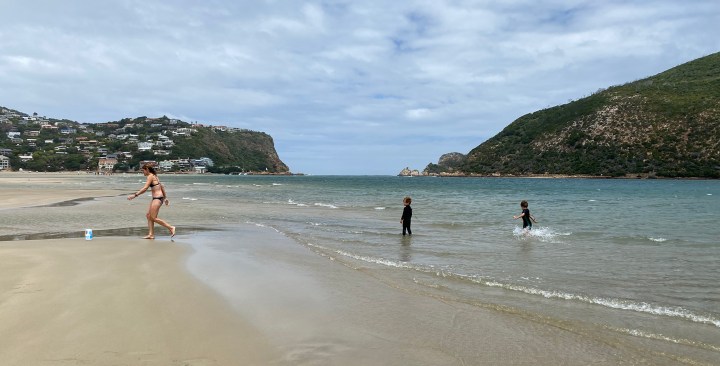
A major cause for concern for the various authorities entrusted with the health of the Knysna estuary is effluent and other unhygienic bits and pieces coming into the lagoon.
‘If Knysna doesn’t curb our estuary’s contamination, come summer, we’ll all literally be swimming in shite.”
This was the blurb on a 2018 article in the Knysna-Plett Herald, highlighting that a number of points around the Knysna lagoon and estuary were recording E.coli levels way beyond the acceptable limit, as defined by the Department of Water and Sanitation, of 500 parts E.coli/100ml.
“I wouldn’t swim around Leisure Isle after heavy rains,” says an anonymous veteran estuary activist. “What saves the Knysna estuary is the tidal flow — 90 million litres of water per day.”
Sifting through the proverbial crap, the article essentially suggested large pods of poo were periodically making their way into one of South Africa’s favourite playgrounds via numerous sources surrounding the lagoon.
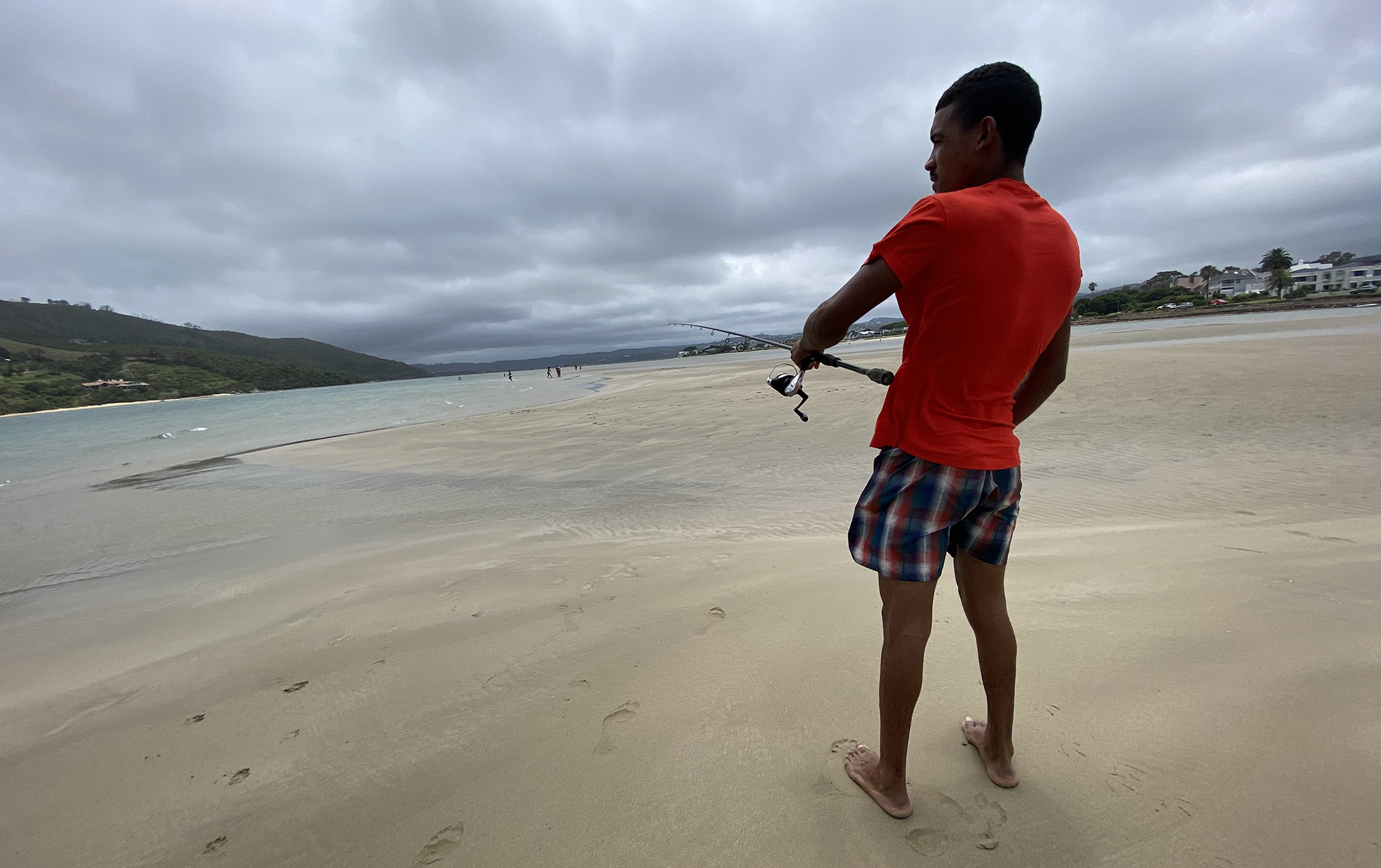
A local resident fishes off a Leisure Isle beach. The town regularly monitors E.coli and pollution levels, posting them on the Knysna municipality website, to which the public has easy access. (Photo: Angus Begg)
The town’s challenge today, almost four years later, is that the estuary’s E.coli problem hasn’t gone away, as reflected by frequent articles on the subject in the Herald. If anything, given the rapid growth of the town’s informal population — and if the Lagoon Update | Knysna Municipality website is anything to go by — it’s worse.
Of concern to lagoon visitors, whether from Houghton or Hornlee up on the hill, should be the reference to E.coli. For those who don’t live near Joburg’s Juksei or Pretoria’s Hennops rivers — in which bacteria have set up a permanent home — this speaks to a wide range of bacteria that can cause various diseases, including pneumonia, as well as urinary tract infections and diarrhoea. These bacteria arrive via culverts which carry stormwater — untreated water — into the lagoon and estuary. Visitors can avoid these areas by visiting the Lagoon Update | Knysna Municipality to make their own choices.
The estuary, however, can’t make that choice. In the macro picture, it represents crucial financial and environmental resources, which are not easy to secure.
Knysna Municipality’s environmental planning head, Pamela Booth, quoting a 2007 CapeNature study, says the lagoon brings in R1-billion in tourism revenue, while there is the not insignificant matter of the Knysna estuary being regarded in the same study as the most important of the 149 temperate estuaries in South Africa.
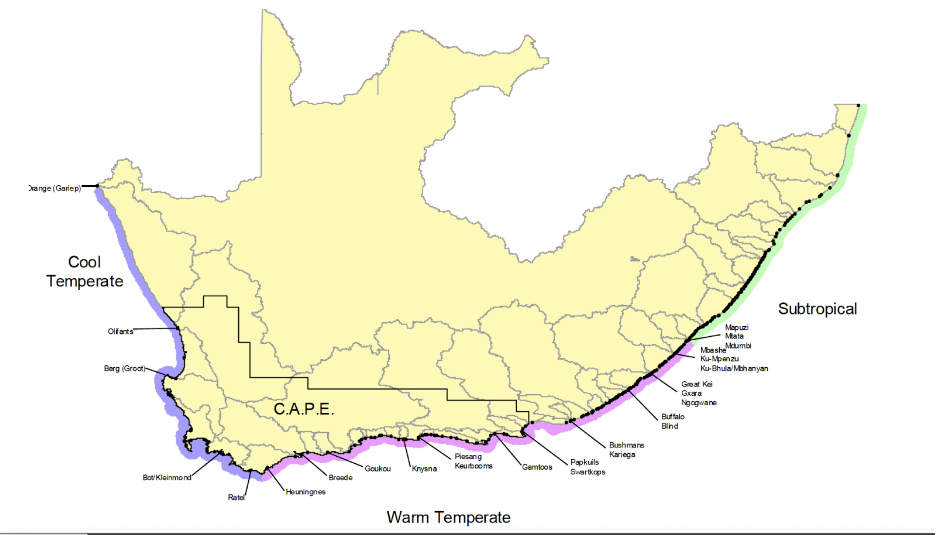
The Knysna estuary is regarded by a CapeNature study to be the most important of the 149 temperate estuaries in South Africa. (Map: Supplied)
With SANParks appointed as the management authority for the Knysna estuary, the national management body’s Knysna manager, Megan Taplin, sums up its importance.
“It is unique,” says Taplin, speaking about the home of the Knysna seahorse, “the only estuarine bay in South Africa and rated number one out of all South Africa’s estuaries in terms of conservation importance and biodiversity.” So when culverts (testing sites are divided between culverts and recreational points) including Queen St, Train Station and the Bongani stream are reporting levels between 23,000 and 6,000 E.coli parts per 100ml of water, it is a matter to be taken seriously.
But those are just the exit points. The E.coli has to originate somewhere.
The Bongani stream
A major cause for concern for the various authorities entrusted with the health of the Knysna estuary is effluent and other unhygienic bits and pieces coming into the lagoon from the town’s northern areas, via the Bongani stream.
“The outlet of the Bongani stream, which is an extensive catchment draining the northern populated areas of Knysna, is one of the most chronic polluters,” says Taplin, before, perhaps unintentionally, making the perfect advert for the importance of a wetland: “The Bigai (stream that runs down from Hornlee suburb, under George Rex Drive and into the estuary) is not often non-compliant as it has a reedbed in its course which acts as a soak and removes much organic pollutants and sediment.”
Taplin says the E.coli counts are a greater threat to human health than to the flora and fauna in the area.
Booth says that since the Bongani stream is “probably the single biggest source of pollution entering the estuary”, her department initiated a survey of all wetlands in the municipal area followed by a rehabilitation plan drafted by freshwater ecologists. This plan “recommended hard engineering structures such as geo-cell chutes, weirs and settling ponds and (involves) an approved maintenance management plan for ongoing maintenance of the structures.” The recommendations would be implemented “should the budget allow”.
Rocks and red herrings
Knysna Infrastructure Services head Pravir Hariparsad says vandalism is an unexpected contributor to the town’s blocked sewers: “Dumped rocks, the size of a ruler in diameter, logs, blankets — it’s deliberate.” Yet our anonymous veteran estuary activist claims to have been told by a former municipal employee “six months ago” that the sources of pollution are undermaintained.
“All of our maintenance is reactive maintenance; we don’t do proactive maintenance. Pipes need to be dug up and replaced — they’re too old and vandalised.”
Gauteng’s ‘new’ R1.2bn Covid-19 ICU hospitals still lie abandoned, unfinished or underused
Knysna’s (human) waste
More concerning with regard to raw effluent running into bodies of water, is the subject of Knysna’s wastewater treatment works (WWTW), the operation of which, along with the town’s pipes, falls within Hariparsad’s remit. With South Africa’s recent history of failing and broken WWTW throughout the country, added to the E.coli problem in the lagoon, Our Burning Planet felt it natural to ask — after local civic and environmental observers said the town was indeed in need of a new plant — if the existing WWTW was coping with the rapidly growing population.
“Yes.” Hariparsad says Knysna added two megalitres to the plant’s original, existing 8.5-megalitre capacity at the end of 2021, and confirmed that Knysna is building a second plant at Windheuwel in the northern areas, at a cost of R100-million. “We understand Knysna is a growing town and are expecting population growth of 2% to 3% annually; we want the town to expand.”
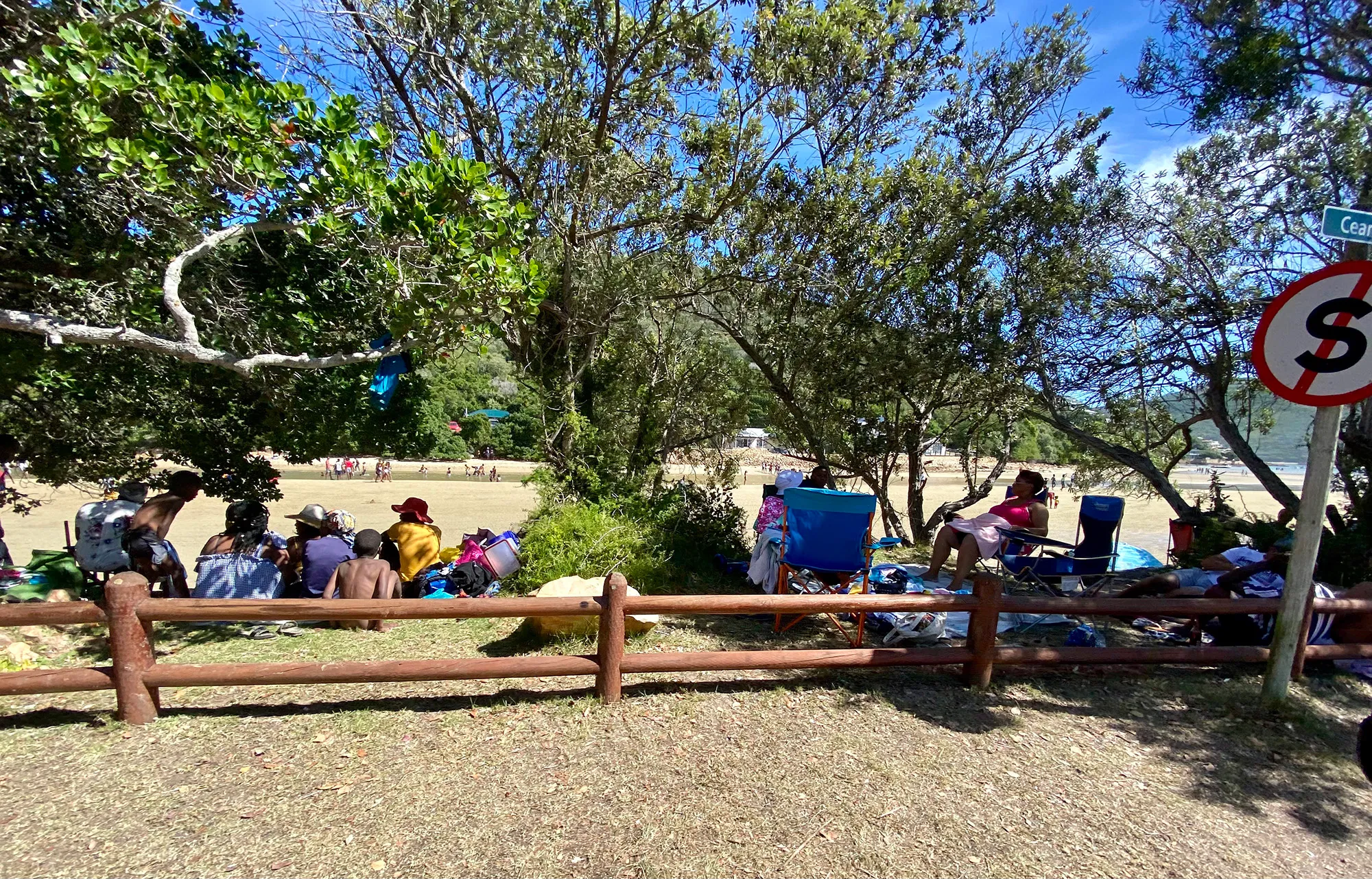
Locals enjoy the Green Hole side of Lesiure Isle in the January holidays. The highly polluted Bongani stream, with high E.coli levels, feeds this part of the lagoon, putting bathers at risk. (Photo: Angus Begg)
Informed word on the street suggests that Knysna Municipality has a negative cash flow. Hariparsad says, however, that the town has kickstarted the construction project with its own funds — while hoping the provincial government will help — and appointed a consultant to begin work on the pricey project. While that phrase carries all sorts of baggage in the world of South African service delivery, Hariparsad speaks of the town’s new “water conservation and demand management strategy, to reduce lost water and reduce the amount going into the WWTW”. His critics ask: Where and when?
Booth says the municipality has also engaged with local businesses, “particularly restaurants on the edge of the estuary” — possibly diplomatic speak for Thesen Isle — regarding the illegal “discharge of fats and oils into the stormwater and sewer system”, which ultimately cause major blockages at the sewage treatment works. A short chat with an experienced marine environmentalist will confirm that such blockages hamper natural processes and cause further contamination of the estuary via the final effluent discharge. So, in a nutshell, poor people perform ablutions in the streams, while relatively wealthy restaurant owners throw destructive fats directly into the lagoon.
And so…
All of that results, no matter how politicians spin it, in unacceptable E.coli and pollution levels in South Africa’s most financially (probably) and environmentally valuable estuary.
Water rights activist Mariette Liefferink, tongue embedded firmly in her cheek, says Knysna’s E.coli readings are excellent compared with Gauteng rivers with their millions of E.coli per 100ml, but maybe all that shows is how far down the ladder of accountability our government has sunk in the matter of conserving our water.
Louw Claassens, former director of the Knysna Basin Project and since 2014 involved with the research, education and conservation of the estuary, told the Knysna-Plett Herald before she emigrated that “the only reason the pollution in the Knysna estuary is not considered a crisis or declared a disaster is because most of the water gets flushed out through the Heads twice a day thanks to the tides”.
“Bacteriological pollution points to raw sewage flowing into stormwater and drainage channels,” said Claassens, before leaving for Australia. “This can be attributed to the poor management of the wastewater works.” The Herald has reported on a few sewage spills in the past number of years, with a well-placed source within Knysna claiming that there have been a number of mishaps at the plant.
“There is little perceptual damage year in and year out, especially for councillors who don’t anticipate to be there for long,” says the anonymous estuary activist. “There is no incentive for them. We have to rely on the active and concerned segment of Knysna citizens to look after the lagoon.”
Not forgetting nature’s daily balm, in those 90 million litres of water that wash in and out of the Heads. DM/OBP











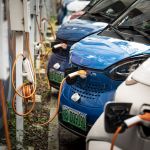









 Become an Insider
Become an Insider
What a piece of lazy, sensationalist nonsense this is! Reading this headline shot a pain through my heart. Managing E.coli in a water body next to a populated area will always require on-going management. Dear reader, please follow the link provided in the first paragraph and compare the actual readings for the last couple of months. Looking at testing at entry points to the estuary for the last six months does not support the breathless claims in this article. There are obvious challenges, as with the management of any body of water, but Knysna has an active population championing for constant improvements to our environment. The author of this article might feel he is supporting this, but he is not. Much of this is article is based on opinions, hearsay and emotion. Give us as readers the facts and numbers! WHY do you state it is getting worse? We pay you to tell us! Instead the author provides exhausting sensationalism (what a headline!), tiring stereotypes (rich dumping restaurant oil, poor dumping in river, and he had to mention one interviewee is emigrating – twice!) As a supporter of the DM I implore you – give us proper journalism on matters as important as this.
Maybe you should cycle, or walk over the wooden bridge that crosses the sewage plant outlets and take a look at the outflow feeding into the Ashmead Channel. When my kids were young we would see young mullet swimming in the clear water pond on the east side of George Rex Drive. This is no longer the case.
The Bongani, and to a lesser extent the Bigai, both drain catchments that are no longer pristine. As Louw Claassens correctly pointed out, we can be thankful that Knysna’s estuarine bay enjoys a large tidal prism
If it is sensationalism or not,xwe have a problem in SA of neglect of WWM systems.How to solve this problem is the question?The majority argue from a business view point, instead of make it a world class destination, with solid environmental practices enforced rigorously.We all know what happened to Rome ,the world is in pretty bad shape environmentally,so let’s rather tackle these problems.Then maybe we will generate more visitors!!!